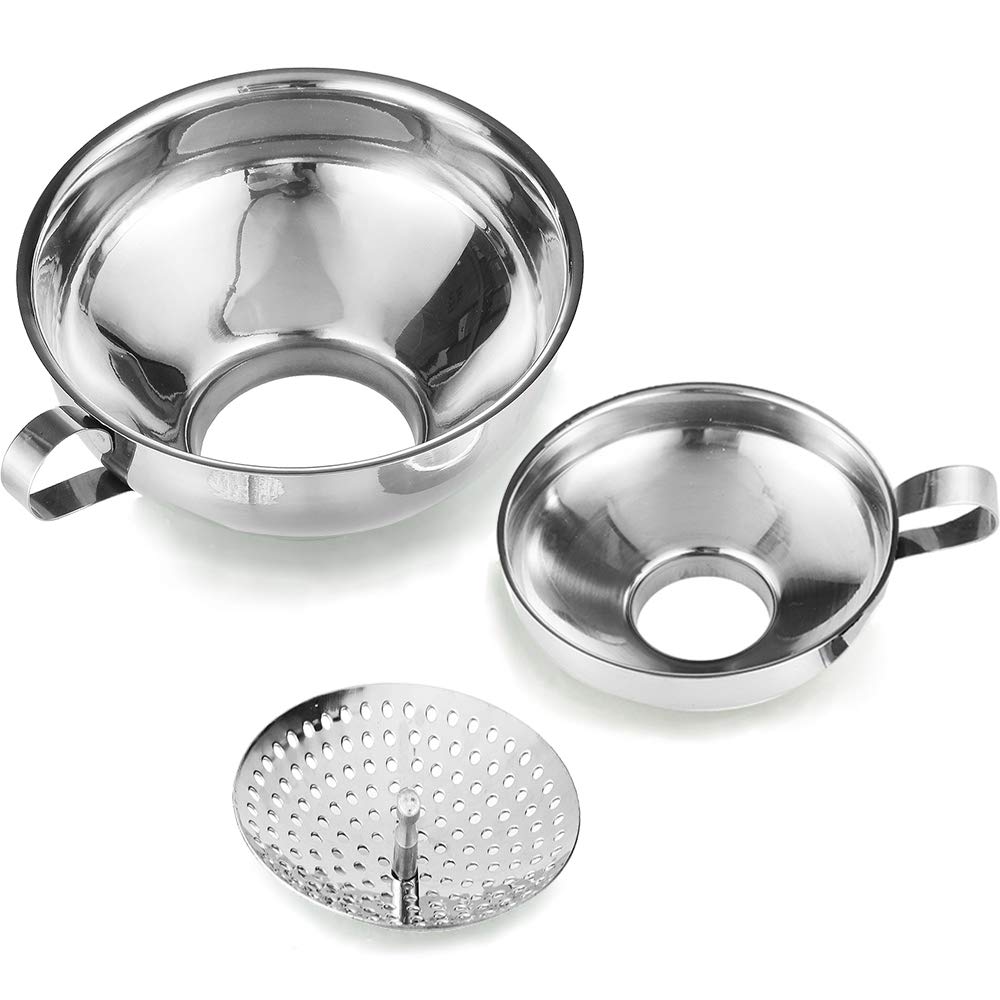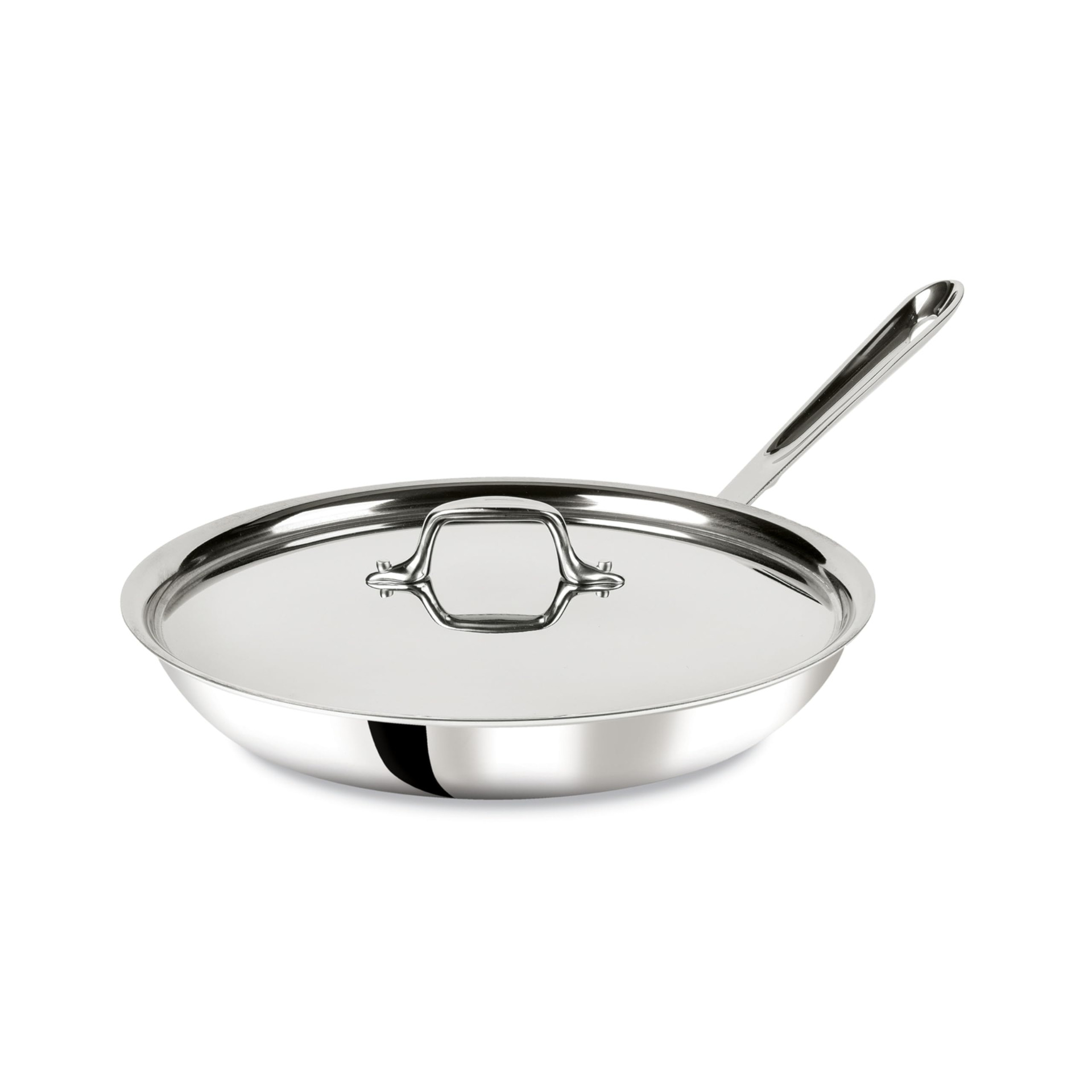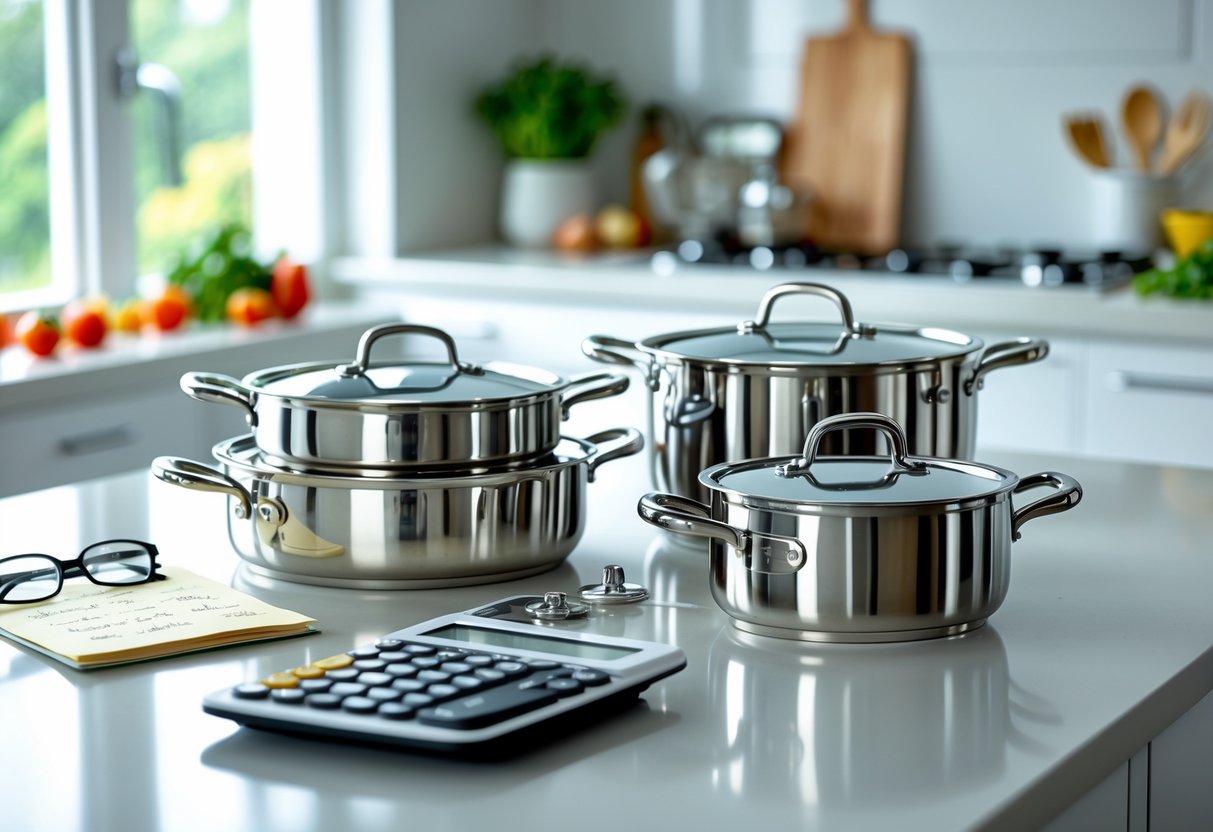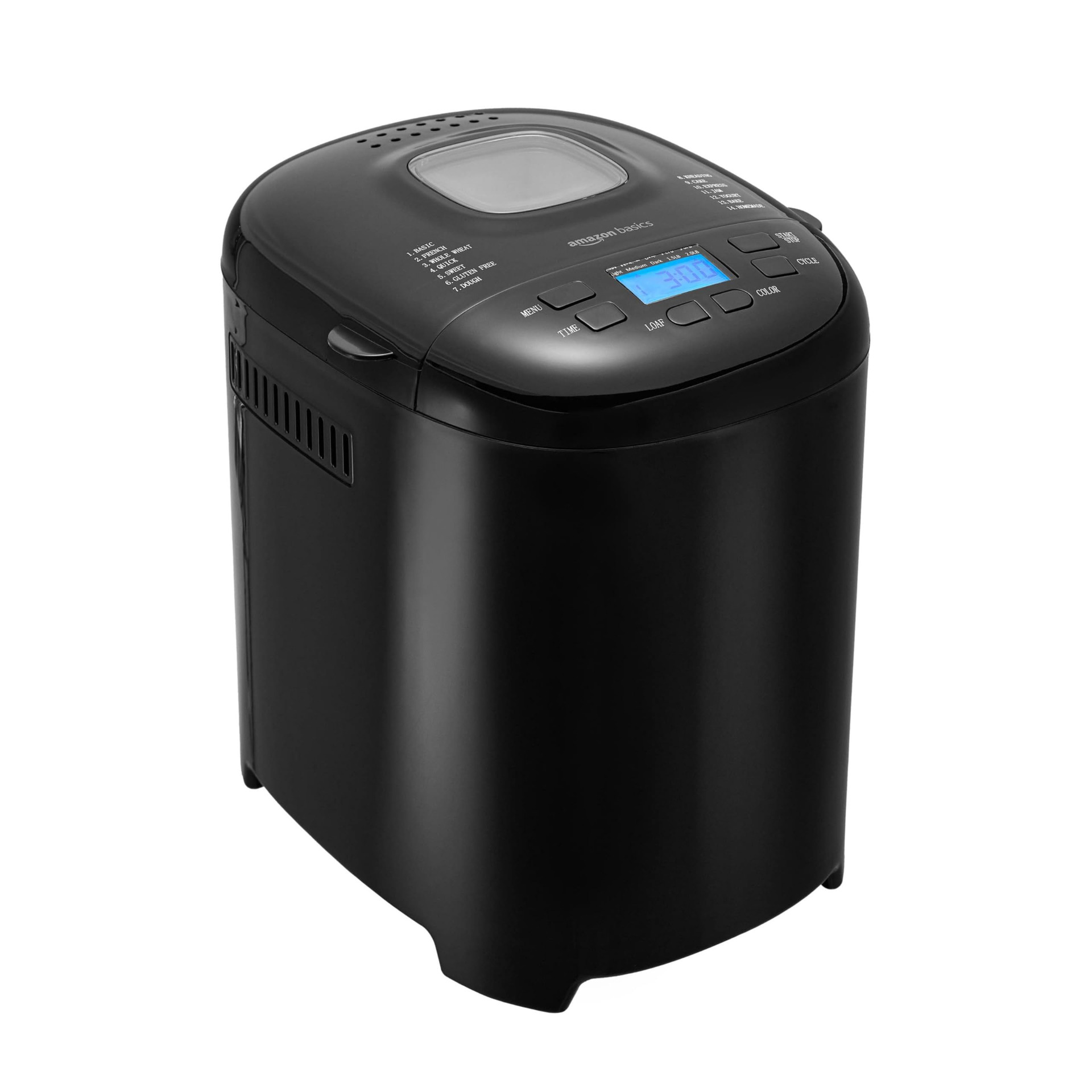Home food preservation's gotten more popular as folks look for ways to cut waste and save cash at the grocery store. Canning lets you stretch the shelf life of seasonal produce, whip up homemade gifts, and stay in control of what goes into your preserved foods.
Meal Prep on $20 a Week: Budget Cooking with Recipes and Tips
Feeding yourself well on just $20 a week sounds impossible, right? But honestly, with some planning and a bit of strategy, it's totally doable—even if you're skeptical at first.
Many people wrestle with grocery costs, especially when they're trying to eat healthy on a tight budget. It can feel overwhelming, but there's a way through.
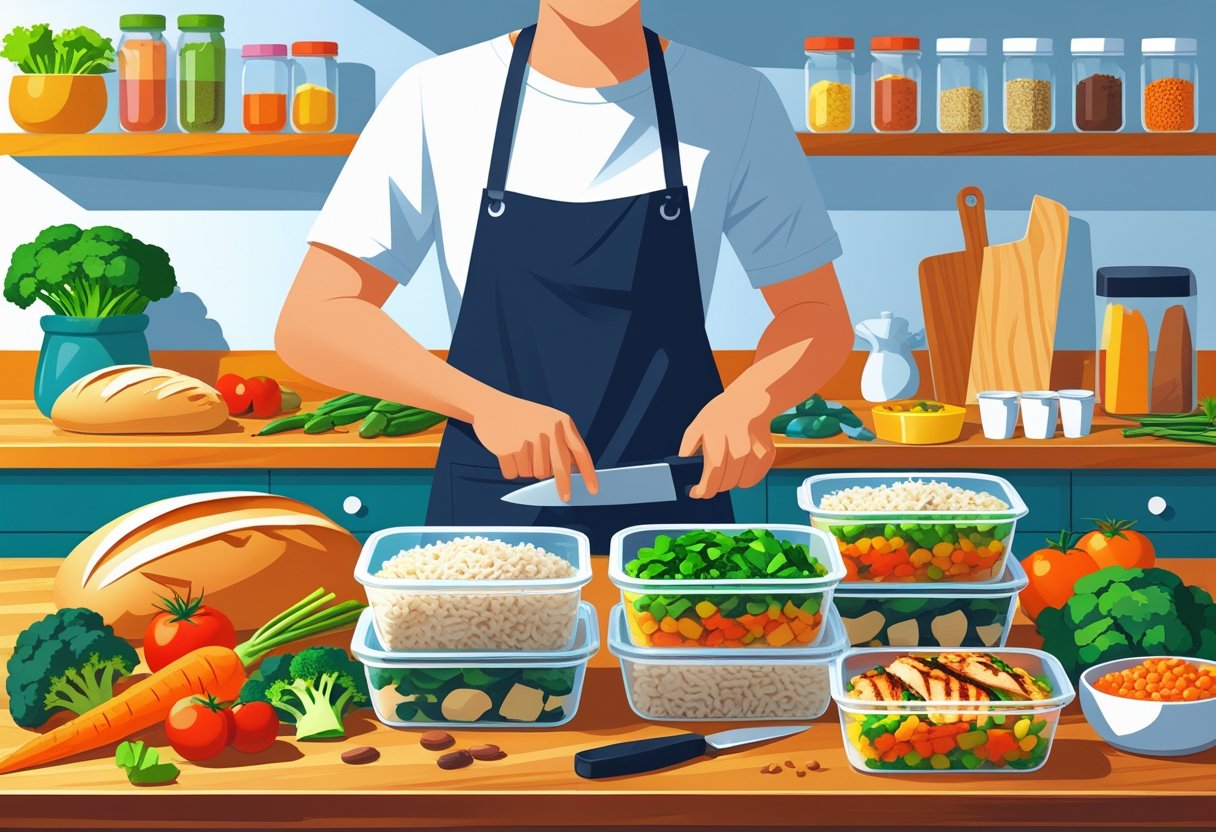
Strategic meal prep lets you whip up nutritious, filling meals for a whole week with just $20 in ingredients. The trick is picking out versatile, nutrient-dense foods that you can transform into several different meals.
If you make smart shopping choices and cook efficiently, you'll stretch every dollar further. Careful planning and simple recipes can keep you full and energized all week on a $20 budget.
Key Takeaways
- Strategic planning and smart ingredient selection make nutritious meals possible on a $20 weekly budget.
- Bulk cooking and versatile ingredients offer more value and cut down on food waste.
- Simple prep techniques help you stay nourished without overspending.
Setting a $20 Weekly Food Budget
If you want a $20 weekly food budget to actually work, you've got to calculate your needs accurately and steer clear of the usual spending traps. Most folks underestimate what they really spend on food by about 25-30% when they first try meal prep budgeting.
How to Calculate a Realistic Budget
Track what you're spending on food for one week before you set that $20 goal. Don't forget receipts from groceries, restaurants, coffee runs, and even gas station snacks.
Break down your weekly budget by meal category so you don't blow it all in one place. A common split is $12 for groceries, $5 for proteins, and $3 for surprises or price jumps.
Sample $20 Weekly Allocation:
- Grains and starches: $5
- Proteins (eggs, beans, chicken): $6
- Vegetables and fruits: $4
- Dairy and fats: $3
- Seasonings and extras: $2
Figure out the cost per serving for each meal you plan. Divide the ingredient price by the servings you'll get to make sure you're sticking close to that $2.85 per meal mark.
Common Budget Mistakes to Avoid
Heading to the store without a list? That's a recipe for overspending. Write down exactly what you need for each recipe before you even leave the house.
Pre-packaged convenience foods will eat up your budget fast—usually 40-60% more than buying whole ingredients. For example, a box of instant rice is $0.89, but you can get the same amount from bulk rice for just $0.23.
Expensive Items to Avoid:
- Individual yogurt cups instead of big tubs
- Pre-cut veggies instead of whole produce
- Name brands instead of store brands
- Bottled water instead of filtered tap water
Always check the unit price! Compare price per pound or ounce, not just the sticker price, so you actually get the best deal.
Essential Tips for Budget Meal Prep
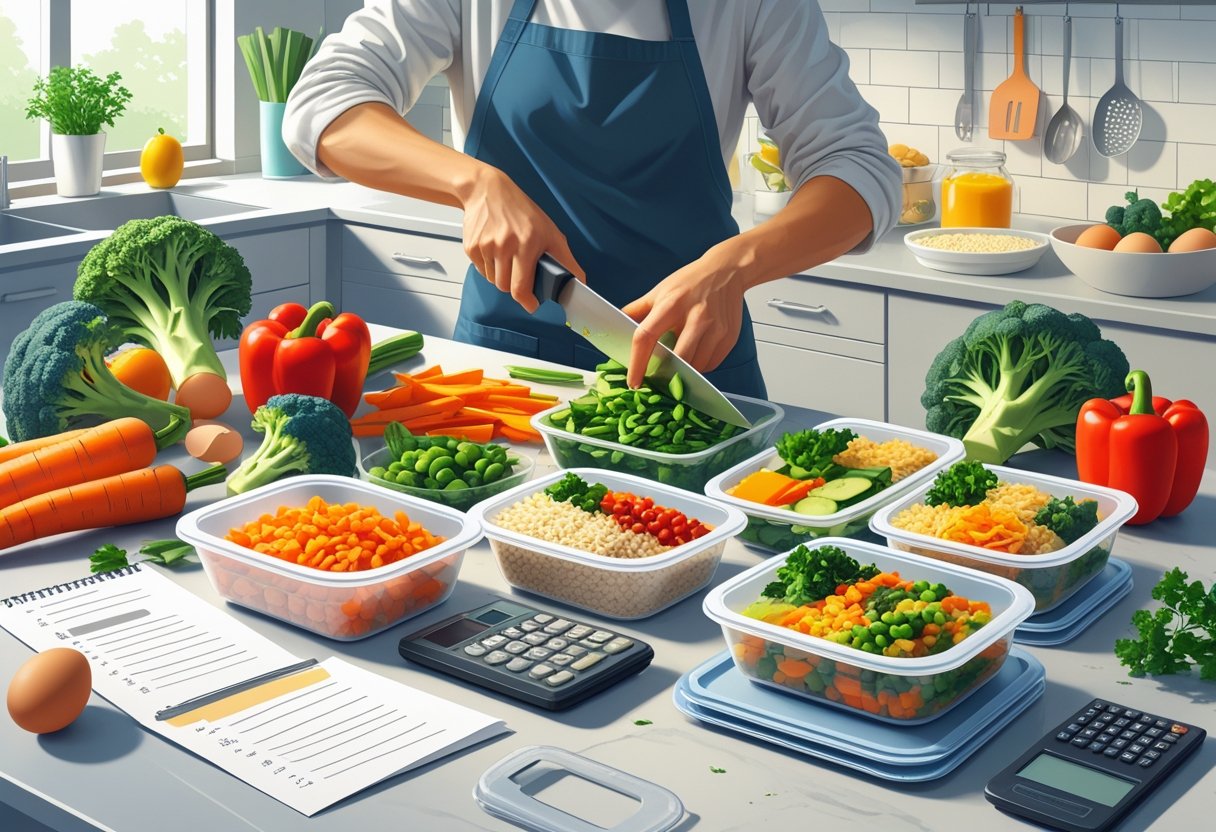
Smart shopping, picking affordable and versatile ingredients, and batch cooking are the backbone of a solid $20 meal prep plan. These habits help you get the most food for your money and cut down on waste.
Smart Shopping Strategies
Make a detailed shopping list before you step into the store. It's way too easy to get distracted by "deals" that bust your budget.
Hit up discount stores like Aldi or local ethnic markets. You'll usually find the same stuff for 20-40% less than at big-name supermarkets.
Go for generic brands when you're buying staples like rice, pasta, and canned goods. They're basically the same, just cheaper.
Buy in bulk if it's actually cheaper per pound. Things like rice, dried beans, and oats are usually a steal in bigger bags.
Time your shopping trips right. Go in the evening when stores are marking down meat and produce. Sometimes you'll score big discounts just because it's the end of the day.
Check store flyers for sales, then plan your meals around what's discounted. Don't force expensive ingredients into your plan just because you want them.
Bring a calculator and add things up as you shop. It's better than getting sticker shock at the register.
Choosing the Right Ingredients
Stick to filling, flexible staples that work in lots of meals. Rice, pasta, potatoes, and dried beans are cheap and keep you full.
Eggs are a solid protein and cost about $0.25 a serving. Use them for breakfast, fried rice, or even a quick pasta dish.
Buy seasonal veggies—they're cheaper and tastier. Think winter squash in the fall, cabbage in winter, zucchini in summer. You get the idea.
Frozen vegetables can be even cheaper than fresh, and they're just as nutritious. Plus, they won't spoil on you.
Get a whole chicken for $1-2 per pound instead of boneless breasts at $4-6. If you use it right, one chicken can cover 4-6 meals.
Canned tomatoes, beans, and tuna are lifesavers. They're cheap, last forever, and add protein and flavor to almost anything.
Skip the pre-cut and pre-seasoned stuff. The markup is wild—sometimes 200-400% more than whole ingredients.
Batch Cooking Techniques
Cook grains and beans in big batches. Make 2-3 cups of rice or beans at once and use them throughout the week.
Roast a bunch of veggies at the same time on sheet pans. It takes barely any effort and gives you tons of options for meals.
Make sauces and seasonings in advance. A basic tomato sauce, some seasoned ground meat, or a herb mix can turn plain ingredients into something way more interesting.
Use a slow cooker or pressure cooker if you have one. They turn cheap, tough cuts into tender, tasty meals with almost no work.
Portion food into containers as soon as it's cooked. That way you don't overeat and you've got meals ready to grab and go.
Store ingredients separately instead of assembling full meals. Proteins, grains, and veggies keep their texture better that way.
Freeze extra portions in meal-sized containers. It'll save you on days when you just can't cook and helps you avoid waste.
Meal Prep Plan for $20 a Week
This game plan leans on rice, beans, and eggs for protein, plus seasonal veggies and basic pantry staples. Bulk buys and ingredient overlap help you stretch those dollars for five days of full meals.
Weekly Menu Breakdown
Monday-Tuesday: Rice and bean bowls with scrambled eggs and sautéed onions. Each serving packs complete protein for about $1.50.
Wednesday-Thursday: Pasta with tomato sauce, canned tuna, and steamed frozen veggies. You get protein and nutrients for around $1.75 per serving.
Friday: Vegetable fried rice with leftover rice, frozen veggies, and eggs. That one comes in at about $1.25 a serving.

Each day hits about 2,000 calories and covers your macronutrient needs. Rotating ingredients helps avoid food waste and keeps things interesting.
Grocery List for Maximum Savings
Bulk staples ($12.00): 5-pound bag of rice, dried beans, an 18-pack of eggs, and rolled oats. These are the backbone of the week.
Proteins ($4.00): One can of tuna, peanut butter, and extra protein from the beans and eggs you already bought.
Produce and extras ($4.00): Yellow onions, bananas, bread, pasta, tomato sauce, and frozen mixed veggies.
Stick to discount stores like Aldi or local markets for the best prices. Always grab generic brands, and pick produce that doesn't spoil too fast—onions and bananas are safe bets.
Avoid pre-packaged and prepared foods. Dried beans are way cheaper than canned, and whole veggies beat pre-cut every time.
Meal Storage and Reheating Tips
Cook your rice and beans in big batches on Sunday. Store cooked rice in the fridge for up to five days—beans last about a week if you store them right.
Divide meals into glass containers as soon as you're done cooking. Label them with what's inside and when you made it, so nothing gets lost in the shuffle.
When reheating rice-based meals, add a splash of water to bring back moisture. Microwave in 30-second bursts, stirring each time. Pasta dishes come back to life best on the stovetop with a bit of extra liquid.
Storage containers: Mason jars are great for soups and sauces. Plastic containers work fine for things like rice bowls.
Freezer tip: Make extra beans and freeze them in meal-sized portions. Cooked rice freezes well for up to three months. You'll thank yourself on busy days.
Affordable and Nutritious Recipes
These budget-friendly recipes keep your nutrition high and your costs under $20 a week. Each meal leans on affordable picks like eggs, beans, rice, and whatever veggies are in season to make hearty, healthy options.
Breakfast Ideas
Overnight oats make a solid, cheap breakfast at just $0.50 per serving. Just mix 1/2 cup rolled oats, 1/2 cup milk, a spoonful of peanut butter, and a sliced banana.
Scrambled eggs with toast run about $0.75 per meal. Scramble two eggs with a splash of milk and toss them on a slice of whole grain bread—boom, 15 grams of protein, no fuss.
Bean and egg breakfast burrito is a classic. Stuff a flour tortilla with scrambled eggs, black beans, and salsa for $1.25. It's filling and keeps your energy up.
Peanut butter toast with banana is easy—two slices of bread, a couple tablespoons of peanut butter, and half a banana. For $0.80, you get healthy fats and a hit of potassium.
Lunch Recipes
Rice and bean bowls are the backbone of cheap lunches. One cup cooked brown rice and half a cup black beans only costs $0.60. Together, they give you a complete protein.
Lentil soup is a miracle for stretching ingredients. Take a cup of dried lentils, some diced carrots, celery, and onions—four servings for $2.50 in total.
Tuna sandwiches are simple: canned tuna mixed with mayo on bread. Each sandwich is $1.50 and packs 20 grams of protein, plus some omega-3s for good measure.
Vegetable pasta salad is just cooked pasta, frozen mixed veggies, and Italian dressing. Four servings come out to $3.00, and you get plenty of carbs and vitamins.
Dinner Options
Chicken thigh and rice gives you protein without breaking the bank. One chicken thigh, a cup of rice, and some steamed veggies—$2.25 per plate.
Bean chili is hearty and cheap. Use dried kidney beans, canned tomatoes, onions, and chili powder. Six servings set you back $4.50, and you can freeze leftovers for later.
Egg fried rice is what I do with leftover rice. Two eggs, leftover rice, frozen peas, soy sauce—it's a full meal for $1.75.
Pasta with marinara is a go-to for carbs. One serving of pasta, half a cup of marinara, and maybe some frozen veggies on the side for $0.90.
Healthy Snacks
Hard-boiled eggs cost $0.25 each and are super portable. I usually boil a batch of six for the week—makes snacking way easier.
Peanut butter crackers are a classic. Saltine crackers with a tablespoon of peanut butter—$0.40 per serving and they keep you going between meals.
Banana with peanut butter is just one banana and a tablespoon of peanut butter for $0.55. You get potassium and some healthy fats, which is never a bad thing.
Homemade popcorn is dirt cheap at $0.15 per serving if you use kernels. Air-popped popcorn has fiber and satisfies that need for something crunchy.
Maximizing Nutrition on a Budget
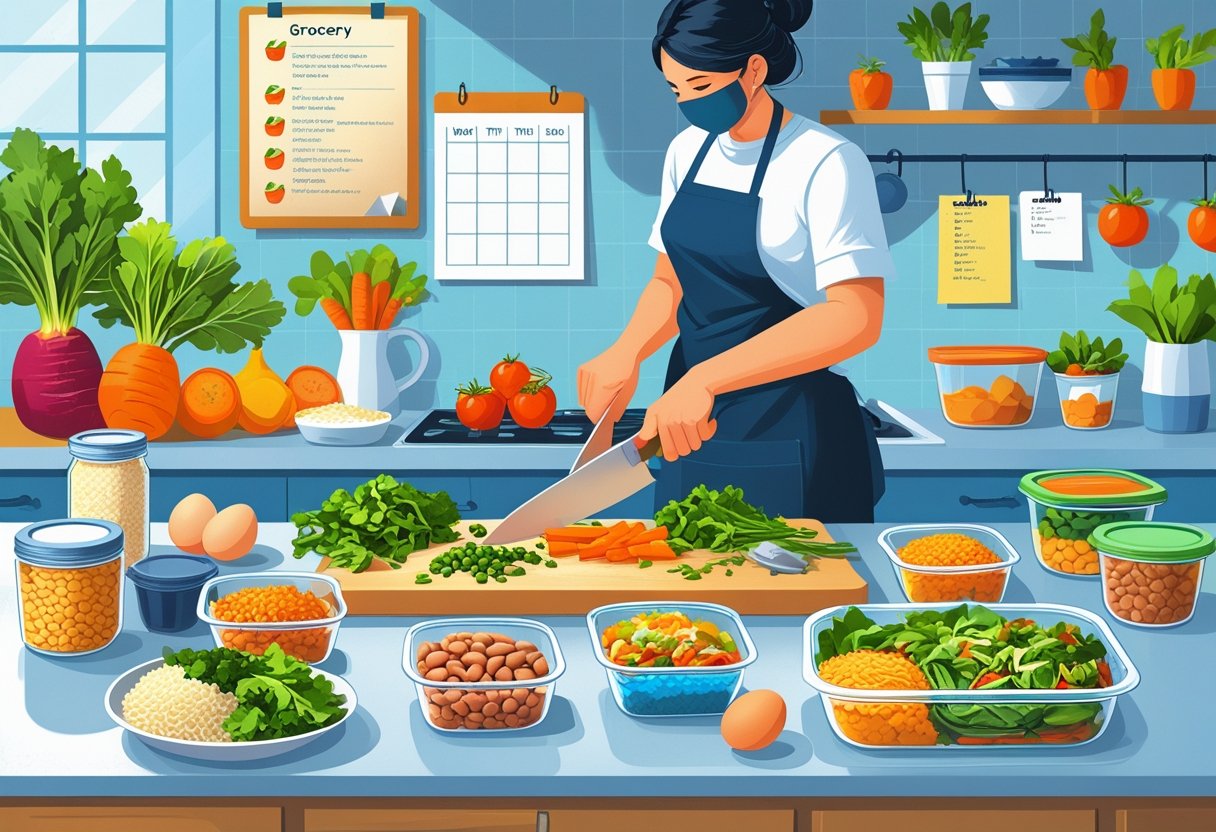
If you want balanced nutrition without blowing your budget, focus on cost-effective proteins and pay attention to macros. It's really about knowing which cheap foods pack the best nutritional punch for your dollar.
Balancing Macros Cost-Effectively
Carbohydrates are the backbone of budget nutrition, usually running $0.50-1.00 per pound. Brown rice, oats, and potatoes stick with you and bring B vitamins to the table.
Dried beans and lentils give you the best protein-to-cost ratio at $1.50 per pound dry. That's 3-4 cooked cups, and each half-cup has 15g protein.
Healthy fats don't have to be pricey. Peanut butter is $3 a jar and gives you 190 calories and 8g protein per two-tablespoon scoop. Eggs are another good bet at $2-3 per dozen.

Frozen veggies are usually $1-2 per bag, and honestly, they keep more vitamins than fresh produce that sits around too long.
Stretching Protein Sources
Complete proteins don't have to mean expensive meat. Rice and beans together get you all the amino acids you need, and you can feed four for under $2.
Canned tuna is a protein powerhouse—25g per $1 can. Toss it with pasta and frozen peas, and you've got a meal for under $3.
Protein combining is where you get creative. Peanut butter on whole grain bread? Complete protein. Hummus and pita? Same deal.
Eggs go further in dishes than solo. One egg in fried rice feeds two, and you're still getting 6g protein per serving.
Milk powder is underrated—cheaper than fresh milk and easy to add to oatmeal, smoothies, or baking for $0.15 per cup reconstituted.
Long-Term Strategies for Budget Cooking
I've found that having a system to cut waste and buy smart throughout the year really adds up. These little habits stick and the savings just keep growing.
Reducing Food Waste
Food waste eats up 20-40% of grocery budgets in most homes. If you store produce right, it'll last 3-7 days longer—worth the effort.
Keep bananas away from other fruit or they'll ripen everything too fast. Potatoes like it dark and cool, but not near onions. Wrap lettuce and herbs in damp paper towels before tossing them in the fridge.
Freezer preservation saves money:
- Bread lasts 3 months frozen
- Cooked rice keeps 6 months
- Chopped vegetables store for 8-12 months
Plan meals around what's about to expire. Veggies that are on their last legs? Toss them in soup or a stir-fry. Overripe fruit works great in smoothies or baked treats.
Leftovers don't have to be boring. Roast chicken on Monday turns into soup Tuesday and sandwich filling Wednesday. Rice can become fried rice, pudding, or even stuffing for peppers.
Try tracking what you throw out for a couple weeks. You might be surprised where your money's actually going.
Adapting to Seasonal Produce
Seasonal shopping can slash produce costs by 30-50% compared to buying out-of-season stuff. For example, winter squash goes for about $0.50 per pound in fall, but jumps to $2.00 in spring. Wild, right?
Peak seasons for budget staples:
- Summer: tomatoes, zucchini, corn, berries
- Fall: apples, squash, root vegetables, cabbage
- Winter: citrus fruits, potatoes, onions
- Spring: leafy greens, peas, asparagus
I like to grab seasonal produce in bulk when prices hit rock bottom. Blanching and freezing vegetables while they're super fresh? Total game changer.
You can also can or dehydrate extra fruit to stretch those flavors all year. Sometimes it feels like cheating the seasons.
When you plan meals, just lean into whatever's in season. Summer feels made for crisp salads or anything grilled, really.
Winter? That's when I crave hearty soups and roasted roots the most.
Local farmers markets usually have seasonal produce at wholesale prices, especially during peak harvest. If you haven't checked one out lately, maybe give it a shot.
Feeding yourself well on just $20 a week sounds impossible, right? But honestly, with some planning and a bit of strategy, it's totally doable—even if you're skeptical at first.
Learning to preserve fruit can transform a seasonal glut into year-round savings. It also helps cut household food waste—something that always feels good.
Stainless steel cookware forms the backbone of professional kitchens and serious home setups. Unlike nonstick pans that need replacing every few years, a good stainless steel pan can stick around for decades—if you treat it right.
Stainless steel cookware can save you a surprising amount of money over time if you treat it right. It lasts for decades, so you can finally stop tossing pans every few years like so many of us do.
5 Cheap Bread Makers That Will Lower Your Grocery Bills and Transform Your Kitchen Budget
Homemade bread costs way less than store-bought loaves and, let's be honest, it just tastes better. A quality bread maker can reduce your grocery spending by up to 70% per loaf and you get to decide what goes into it.

